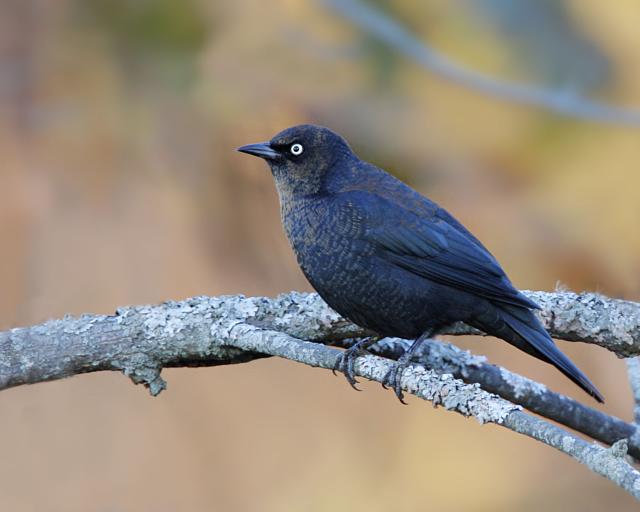Today's thoughts are from Matt Medler, BSI Science Coordinator.
As a group, blackbirds are among our best known and most noticeable birds. North America's three grackle species are all large, loud birds that practically demand our attention with their strident calls and striking displays. And who among us is not familiar with Red-winged Blackbirds, with their striking plumage, repetitive song, and massive autumn flocks? Despite the conspicuous nature of most blackbirds, there is one species that is most notable for the fact that it is extremely inconspicuous--the Rusty Blackbird.

Rusty Blackbird
Credit: Jeff Nadler
Rusty Blackbird is such an obscure bird that until quite recently, few people realized that it underwent a greater decline in the last part of the 20th century than any other species of North American bird, with numbers declining by as much as 98% since the 1960s. And, even now, ornithologists are uncertain about what has caused such a dramatic decline. Fortunately, however, there is now a group of bird conservationists specifically focused on Rusty Blackbirds, and they need your help in trying to better understand this bird.
The International Rusty Blackbird Technical Working Group was established in 2005 to create a year-round research program designed to better understand the basic ecology of the Rusty Blackbird, determine causes of the decline of the species, and develop conservation strategies for preventing further declines. The Group has already initiated intensive research projects on both the breeding grounds and wintering grounds of Rusty Blackbird, and is now interested in learning more about Rusty Blackbirds as they migrate north during the springtime.
Together with the Cornell Lab of Ornithology and the National Audubon Society, the Rusty Blackbird Working Group is calling on birdwatchers from across the species' migratory path to go out and look for Rusty Blackbirds between April 1 and 7 and then report their results to the eBird database. In addition to reporting the number of blackbirds seen, observers will be asked to include information about the ratio of males to females, the behavior of the birds seen, and the habitat in which they are found. Complete details for this monitoring effort will be available at the eBird web site on Wednesday, March 26. If you are uncertain if you live in an area where Rusty Blackbirds can be found during migration, check out BSI's detailed species account, which includes a map with spring and fall migration routes.
The Smithsonian Migratory Bird Center has an excellent web site devoted to the Rusty Blackbird, with information on the bird's life history, a discussion of possible causes of declines, and a summary of research being conducted by members of the Working Group. For those interested in learning more about this poorly-known species, I highly recommend visiting the Smithsonian site.

